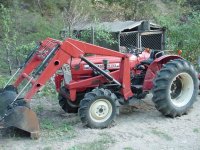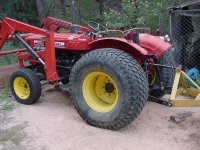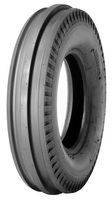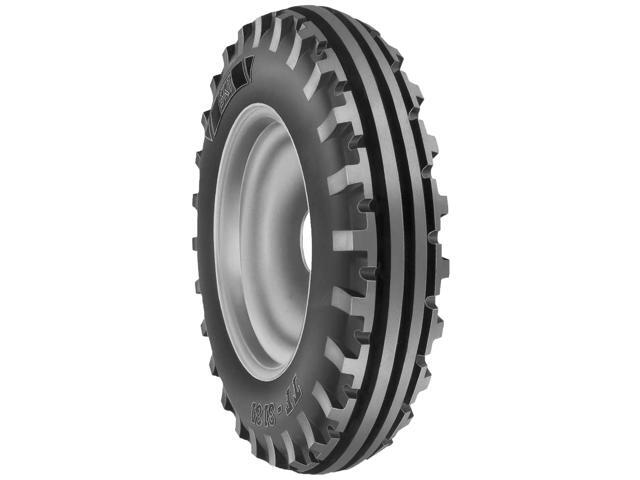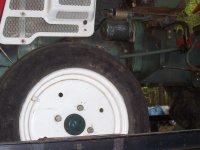bmaverick
Super Member
- Joined
- Sep 17, 2013
- Messages
- 6,617
- Location
- Beloit-WI
- Tractor
- Yanmar YM2610 ■YANMAR GURU■ EXTRAORDINAIRE
Often the tire size will include two numbers which are the measurements for the radius and width of the wheel that the tire should mount on. It's not uncommon for a tire to be double labeled in inch and metric. If there is a standard system I don't know it. Yours looks to be designed for a wheel 15" in diameter and 4.50 means a width between the inside mounting faces of 4.5". R usually means the tire is made with "radial construction"
Other numbers usually relate to either footprint or the inflated width of the tire. Rarely is the outer diameter or circumference noted.
For the 5.90x15SL that means the tire is designed to be mounted on a 15" rim with 5.9" between the inside faces. You can mount it on a different width rim. Give or take and inch and it won't matter. Maybe you can get away with even more. All it will do is change the inflated and loaded measurements. But you have to measure those for yourself anyway. Bottom line....will 5.90x15 work on a 5" wide rim? Yes, probably work fine. And it will have a different tread contact with the ground and a somewhat larger circumference.
I've done some 4wd tire exchanges and helped others. The reason to match tire to intenal gear ratios is because it is the easiest way to protect the drivetrain especially for doing heavy loader work or if on high traction surfaces. If you are not doing loader work & can always slip a tire, then matching the ratios doesn't matter so much.
If you are going to change tires and want to match the Front/Rear tires to the Front/Rear internal gear ratios, there are a few simple steps to take first......
First is if you do not have a manufacturer measurement for your tire called: "Loaded Circumference" then you will have to get it by measuring the tire rotation in the dirt - or some similar method. Simple Arithmetic won't work. A loaded tire is not round it is an oval with one flat side. The difference from loaded circumference to arithmatic circumference is larger than the allowable error in allowable front/rear gear ratio.
Second: same goes for the internal F/R gear ratio. If that ratio isn't in your shop manual, you have to measure it yourself. Sometimes the manual is wrong.
Thirdly: match the tire F/R loaded circumference ratios as closely as you can to the F/R internal gear ratio. Try to stay within 5%.
Good luck,
rScotty
Thanks.
Overall I want a tire with the nearest OD in size to what I have with the 5.00-15 because the tractor frame sits level to the ground. This way, I wouldn't need to mess around with re-aiming the headlights. Yanmar didn't make it easy to aim the headlights. It's like open the hood, reach way down there and turn a few fasteners, close the hood properly and locked down, then hop up on the seat and look. If wrong repeat and repeat and repeat. LOL Not like autos where the adjustment is from the outside.
In the past decade or from about 2005 till now, I've notice the rubber tubes having thinner wall section and inferior materials. This goes from bicycle tubes, cart tire tubes, wheelbarrow/tiller tubes, etc. I'm afraid of paying full price on a junk tube and then having the put forth cost once again for a tube AND THEN another remounting fee. UGH.
Those cheaper tubes go bad even during the first instillation rupturing on the seams.
Anyone know of a very good BRAND for tubes these days? And does the manufacture back it up? I'm cringing the thought that putting out up to $200 and with bad tubes going a second round for about another $100 due to the tubes being the wrong selection of brand quality.
